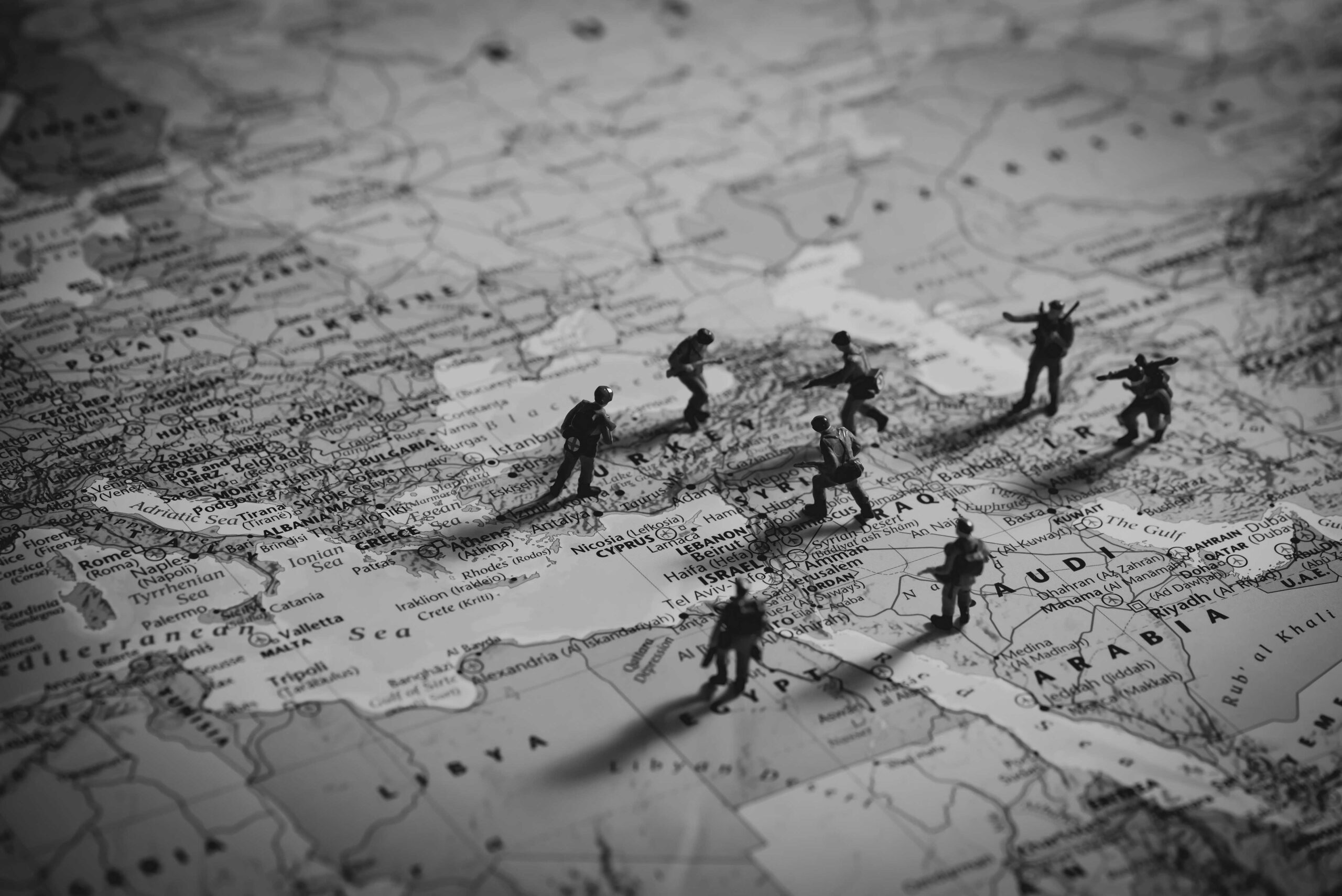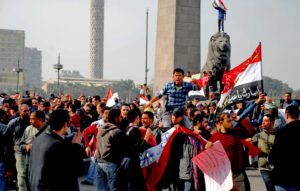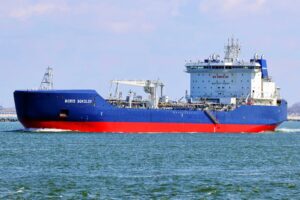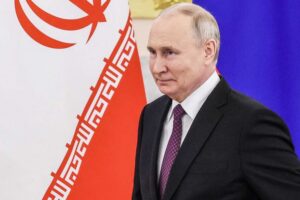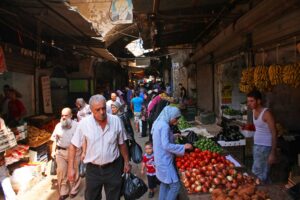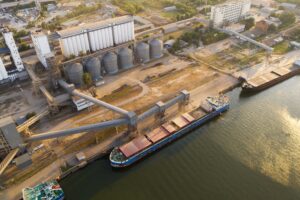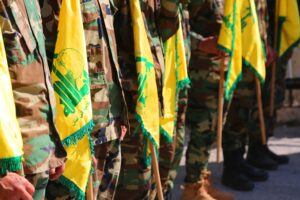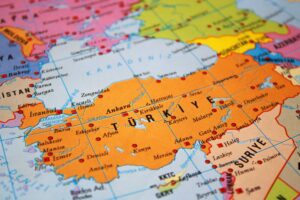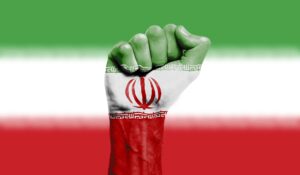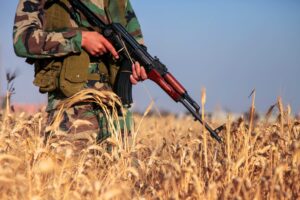Ten years on from the Arab Spring, none of the aspirations voiced in the popular uprisings across the region have been met. A handful of dictators have fallen, but their legacy has been ruinous. Elsewhere, authoritarian regimes have survived or reinvented themselves, while doubling down on their repression. The economies of two countries, Yemen and Syria, with a combined population of more than 50M, have been devastated, and the Lebanese economy has been in free fall since late 2019. Conditions have been more settled in some other parts of the region, such as Morocco and the Gulf Arab states, but the positives have been few and far between.
Looking ahead another ten years, it is hard to envisage much improvement, although many of the region’s governments have published visions for 2030, 2040 and even 2070 (in the case of the UAE) in which living conditions for their populations are progressively enhanced. One of the central political themes will be armed conflict: will there be progress in efforts to resolve the existing conflicts, and what are the prospects for fresh conflicts to erupt? Another theme relates to forms of governance: will authoritarianism continue to be the default setting; or can there be any realistic prospect of democratisation?
One of the most important economic themes for the region in the coming decade will be the impact of the global energy transition away from fossil fuels. The region’s major oil and gas exporters are seeking to ensure that they retain or increase their market share, even as demand starts to decline. They will also seek to deploy their financial muscle to ensure that they gain a strong foothold in future energy sectors, notably hydrogen production and exports.
More broadly, many Middle Eastern economies enter the new decade facing deep structural problems—high rates of unemployment, poverty, poor provision of basic services, low rates of savings and investment, and chronic fiscal and external payment deficits. Progress in addressing these issues may be made in some countries, but in others they will only get worse.
Permanent conflict and failed states
There is a long list of active or dormant conflicts across the Middle East and North Africa. Some go back decades. Others were sparked off, or exacerbated, by the 2011 popular uprisings. The most ruinous have been in Syria and Yemen, and there is little prospect of either of these conflicts being decisively resolved.
The Assad regime may yet survive another ten years, propped up by its allies and sustained by humanitarian aid, and there is still a chance that he will achieve a partial rehabilitation as part of a cosmetic political resolution.
In Syria, after more than half a million violent deaths and almost half of the population driven from their homes, as external and internal refugees, the military conflict has wound down, but there is no guarantee that it will not flare up once more. President Bashar al-Assad has clung on to power, with vital support from Iran and Russia, but large parts of the country remain outside his control. The north-east, including important oil and agricultural resources, is run by an autonomous administration dominated by Kurds and protected by a small contingent of US forces. A northern strip is controlled by opposition armed groups backed by Turkey. Most of Idlib, in the north-west, is under the control of the Islamist Haya Tahrir al-Sham, under effective protection from Turkey. Assad’s forces in the south of the country face a low-level insurgency, while Israel regularly carries out air strikes against targets identified as part of Iran’s strategy of building up its offensive capabilities in Syria and Lebanon.
None of the major stakeholders appear to have the inclination or ability to act to change this status quo. Assad himself is preparing for a fourth seven-year term, with possible future scenarios including a handover of power to his wife, Asma, or his eldest son, Hafez. Assad may have succeeded in consolidating his political and military position, but the continued degradation of the Syrian economy presents him with a formidable challenge. This is partly attributable to Western sanctions, but, as Assad himself has acknowledged, the financial crash in Lebanon dealt a hammer blow to the Syrian economy. At least $20BN of Syrian deposits are blocked in Beirut banks, and the economic collapse has damaged the cross-border smuggling trade that was a lucrative source of income for well-connected Syrian business people. Any recovery of the Syrian economy will depend on a heavy commitment of external financial aid, but that is unlikely to materialise while Assad remains in place. The Assad regime may yet survive another ten years, propped up by its allies and sustained by humanitarian aid, and there is still a chance that he will achieve a partial rehabilitation as part of a cosmetic political resolution, but the underlying conflict between this regime and its brutalised subjects will go on.
A national ceasefire and an eventual settlement [in Yemen], possibly based on the break-up of the country into semi-autonomous zones, cannot be ruled out.
The outlook for Yemen is similarly bleak. The early-2021 Houthi offensive against the northern region of Marib, home to more than 2 million internally displaced Yemenis and the last stronghold of the internationally recognised government, marked a sharp escalation in violence after a two-year lull. The Houthis took advantage of the Biden administration’s withdrawal of support for Saudi offensive operations in Yemen to press home their strategic advantage, while stepping up drone and missile attacks on targets within Saudi Arabia (although some of these were launched by Iran-backed militias in Iraq). The offensive risked exacerbating an already catastrophic humanitarian crisis. Even if the Houthis manage to break through in Marib, they will face stiff opposition elsewhere in the country. A national ceasefire and an eventual settlement, possibly based on the break-up of the country into semi-autonomous zones, cannot be ruled out. Whatever happens, the damage already wrought on Yemen and its 30 million people has been too severe to be mended by 2030.
One important factor that will influence the course of conflict in the Middle East is the relationship between major regional and international powers. With the advent of the Biden administration, efforts are underway to revive the Iran nuclear agreement, and to broaden its scope to cover Iran’s regional power projection, in return for which sanctions on Iran would be lifted. This is unlikely to be a smooth process, and even if a new deal is struck, it would not satisfy all parties. Conditions would be attached to sanctions relief; Iran’s network of militia allies and forward bases in Iraq, Syria and Lebanon cannot be easily wound up; verification of Iran’s nuclear activities and ballistic missile development would be a source of dispute; within Iran itself there would be differences among political factions about how far to go in seeking normalisation with the West. Even a flawed deal could have a beneficial effect on regional conflicts in which Iran has played a role, but the inevitable flaws in any deal could also become the source of fresh conflict.
Turkey’s military interventions around the region, in Syria and Azerbaijan, as well as in Libya, have been largely successful, however, they have been resisted by a wide array of countries.
Among the existing conflicts, the prospect of a peaceful settlement in Libya has recently improved. The increased openness of Libyan groupings, whether political or tribal, to working together has been helped by changes in the external dynamics. The UAE’s appetite for regional military expansion has dimmed, and Egypt and Turkey are drawing back from confrontation. Turkey’s military interventions around the region, in Syria and Azerbaijan, as well as in Libya, have been largely successful. However, Turkey’s moves to assert itself in the eastern Mediterranean have been resisted by a wide array of countries, and the Turkish government appears to have concluded that this is a self-defeating exercise. The ostensible prize for Turkey would be access to natural gas resources, but it is by no means clear that this would be feasible, and Turkey has better prospects in its own waters of the Black Sea, as well as having a wide array of options to procure gas efficiently and cheaply via pipelines from Russia and Azerbaijan or through importing liquefied natural gas (LNG).
Another resource-based issue with the potential to trigger conflict is the Grand Ethiopian Renaissance Dam (GERD) on the Blue Nile. The filling of the reservoir behind the dam started in 2020, but the impact was not felt downstream as the annual flood that year was well above average. If no agreement can be reached on the terms for filling up the reservoir to its full capacity, there is a risk of military intervention from Egypt if Ethiopia goes ahead with the reservoir fill, particularly in the event of a succession of below-average Blue Nile flood seasons. Sudan’s position on the dam has recently tilted towards that of Egypt, in light of the repercussions from the Ethiopian army’s offensive against Tigray in late 2020.
Energy transition
By 2030 major changes will have been made in the structure of global energy demand. Total oil consumption is likely to flatten out during the next few years, and may well start to decline in the second half of the decade as decarbonisation gathers pace. Natural gas demand will eventually show a similar pattern, but is still likely to be higher in 2030 than at present. These trends have important implications for the Middle East and North Africa. The region accounts for about one-third of total world oil production, and about 28% of natural gas output. Moreover, roughly half of the countries in the region rely heavily on oil and gas export revenue to cover their budget costs and their imports. Weaker demand for oil and gas is likely to be reflected in lower prices, which will depress income even if major oil and gas exporters such as Saudi Arabia, the UAE, Iran, Iraq and Qatar manage to retain market share.
Governments in Middle East oil exporting countries have been well aware of the risks of overdependence on oil revenue for years, and they have been pursuing diversification strategies since the 1970s, with mixed results. One route has been to add value to the energy chain through investing in petrochemicals. This has been highly successful for Saudi Arabia, although it has not created many jobs. Another has been the Dubai approach of creating a new services-oriented economy, which has been spectacularly successful, although it will be hard to replicate.
The most ambitious effort at diversification currently underway is in Saudi Arabia. It has elements of the Dubai approach, such as the development of leisure and entertainment facilities and hosting global sporting events. It also includes futuristic plans for zero-carbon cities, production of electric vehicles and setting up a green hydrogen sector on a massive scale.
The UAE, Morocco and Egypt have made some progress with solar power, but as of 2020, Saudi Arabia was still in the starting blocks.
The use of hydrogen as a zero-emission alternative to fossil fuels is by no means a new idea, but it has recently gained currency as decarbonisation gathers momentum. Now several Middle Eastern countries have picked up the challenge of producing green hydrogen, using solar power in order to produce the gas through electrolysis. This process can be extended to produce ammonia for long-distance transportation of hydrogen. The region has some advantages, such as reliable sunshine and substantial infrastructure for the production and shipment of bulk chemicals. The main oil-exporting countries also have the financial muscle to invest in such scheme in the required scale for a global export business. However, production costs for green hydrogen remain prohibitively high, and the Middle East has lagged behind many other parts of the world in the development of renewable energy. The UAE, Morocco and Egypt have made some progress with solar power, but as of 2020, Saudi Arabia was still in the starting blocks. Ultimately, large energy-consuming countries are likely to focus on developing their own zero-carbon sources rather than depending on imports of ammonia from the Middle East.
Economic and social balance sheet
Most of the countries of the MENA region are in the throes of political and economic crises, in varying degrees of intensity. A handful of countries have a basic level of political stability, along with some positive aspects to their economic performance. This short list includes Morocco and Egypt, although both countries feature repressive security states and chronic poverty, alongside privileged elites. The Egyptian and Moroccan governments have broadly adhered to an economic agenda commonly defined as neo-liberal. This has entailed prioritising fiscal sustainability, eliminating energy subsidies, adopting flexible exchange rate systems and seeking to smooth the way for increased private investment.
In Egypt’s, the flotation of the local currency had some pernicious effects, notably an increase in the already high poverty rate to about one-third of the population.
In Egypt’s case, this involved a harsh adjustment in 2016, with the flotation of the local currency, as part of a US$12BN IMF programme. This had some pernicious effects, notably an increase in the already high poverty rate to about one-third of the population. On the other side of the ledger, inflation, which has eaten away at living standards for decades, has now come down to the low single figures, and the economy has achieved an underlying growth rate trend of 5-6% (apart from the Covid-19 slowdown). Egypt’s financial position is also relatively secure, even if this has entailed a large build-up of external debt and heavy reliance on inflows of portfolio investment. A basic level of social protection has been maintained through increased food subsidies and the roll-out of an extensive safety net scheme. There is a risk that, under the pressure of a heavy debt-servicing schedule and as a result of the misallocation of resources to grandiose schemes like the new capital, Egypt will slide back into economic crisis sooner or later. Moreover, the private investment-led model has been undermined by the encroachments of the military and intelligence services and by the increased politicisation of the judiciary.
Morocco has had more success than Egypt in establishing itself as an industrial and logistics hub, through the development of export-oriented automotive and aerospace industries and the Tangier-Med container port. However, the economic benefits from such initiatives are not widely shared, and most Moroccans depend on either the precarious, rain-dependent, agricultural sector or the informal sector for their economic survival. Nevertheless, Morocco, like Egypt, has laid the basis for potential growth of at least 5% over the coming decade. The benefits of such an achievement will not be shared equally, but it would yield some improvements in overall living standards.
Elsewhere in the region there is little room for even such guarded optimism, with Iraq consumed by factionalism and monstrous corruption, Lebanon’s finances in ruins, and Syria and Yemen requiring miracles to set them on the path of reconstruction.


